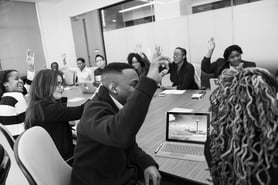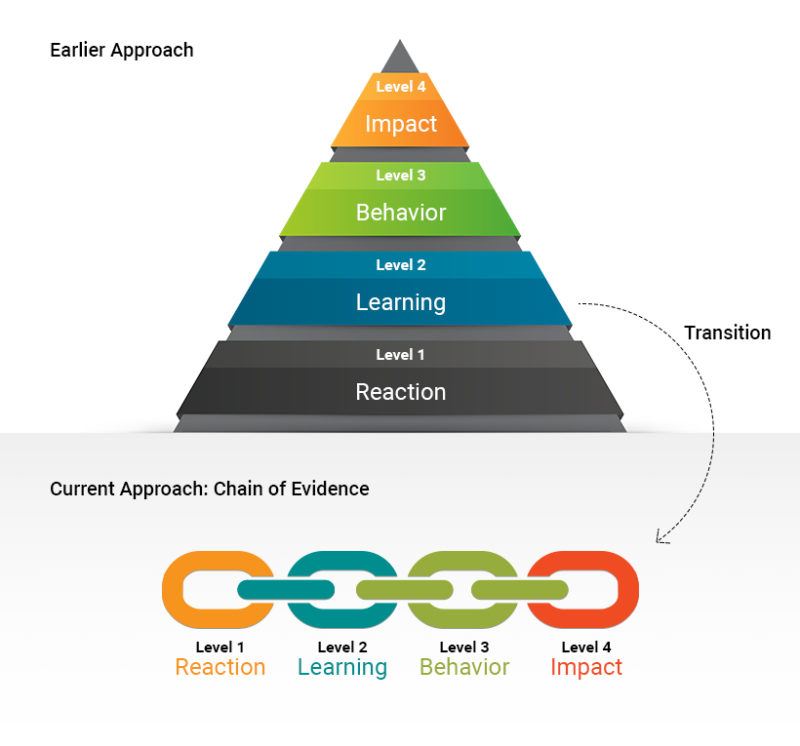One skill trumps all others in today’s organizations; that skill is learning. Learning and change are the yin and yang of performance. Due to the accelerating pace of change, organizations made up of ambitious, efficient learners will win the day.
But what is learning? Is it the development of a skill, the acquisition of knowledge? I would contest that true learning, the kind we need today, is more than that.
Earlier in my career I lead a corporate training company offering workshops for skills like time-management, sales, negotiation and project management. The work was very satisfying as participants experienced ‘ah ha moments” and left with commitments and motivation to apply their new skills. However, according to the American Society for Training and Development, even the best training workshops only result in 15-20% learning transfer; actual long-term changes in behavior.
One of the best-known models for evaluating training outcomes is the Kirkpatrick Model. The type of learning this model describes is the learning that takes place in a training or education process (like a workshop). The four levels are:
- Reaction – how did the participant feel as a result of the learning event or process? This is often all an educator receives through the end-of-day evaluation sheets (sometimes called ‘smile sheets’) and gives very little information about the value of the learning process.
- Knowledge and Learning – how well can the learner recall information (knowledge) or demonstrate the new skill? This can be assessed by testing but also tells us little about adoption of the new knowledge or skill in the workplace.
- Behavior – at this level, the testing for learning transfer is assessed through observation, often by a manager. Think of a road test when getting a drivers licence. Does the learner consistently apply the new skills and knowledge in real-time? This is often where evaluation stops for the individual.
- Impact – the fourth and final level in this model is how the new behaviors of the learners is impacting the organization. Questions like: if our team is managing time and priorities better, are we getting more done in less time? If our sales teams have adopted best-practice sales skills, are we seeing an increase in revenue?

Don’t let your learning lead to knowledge; let your learning lead to action.
Jim Rohn
This final level is difficult to measure; other factors can influence business results. For example, even if my sales team is demonstrating best-practice behaviors, competitor actions or the economic situation can change the impact on revenue. That said, I would strongly contend that day-to-day behaviors of employees has the greatest impact on results achieved by any organization.
Armed with this model, leaders should continually assess both their own coaching practices and formal training investments. Level 3 is where managers play a key role in observing their employees’ behaviors, and then providing constructive feedback. This should be positioned as a positive and constructive task, rather than a method for micro-managing or policing the activities of our people. Likewise, organizational habits like project debriefs (post-mortems) and one-on-one coaching rhythms will ensure the development of a strong culture of learning.
How do you maximize employee learning in your organization?
Article by Tim O’Connor


